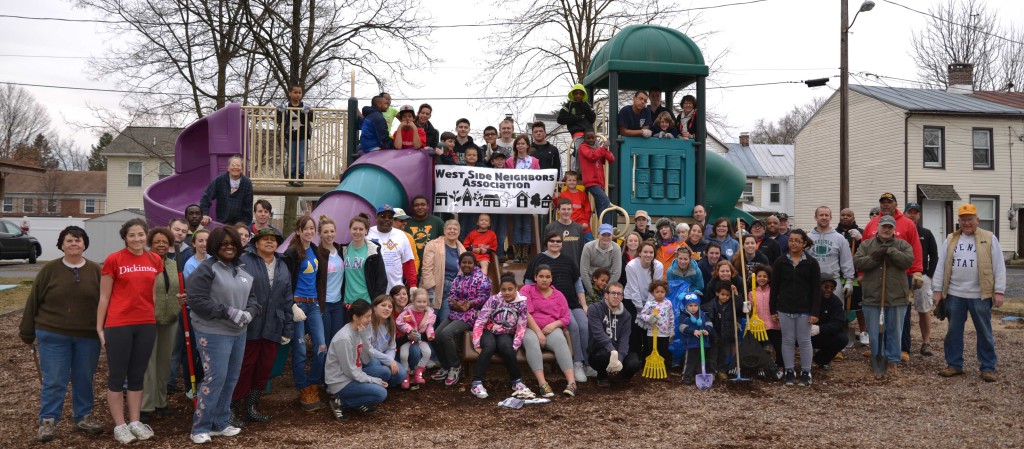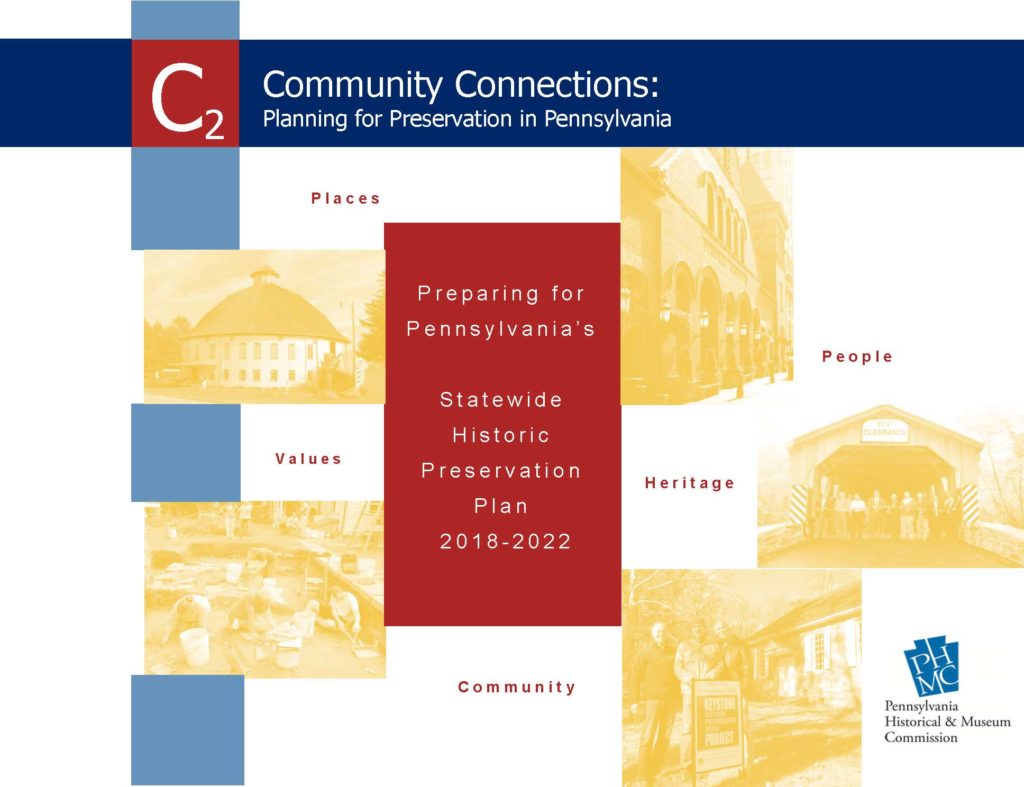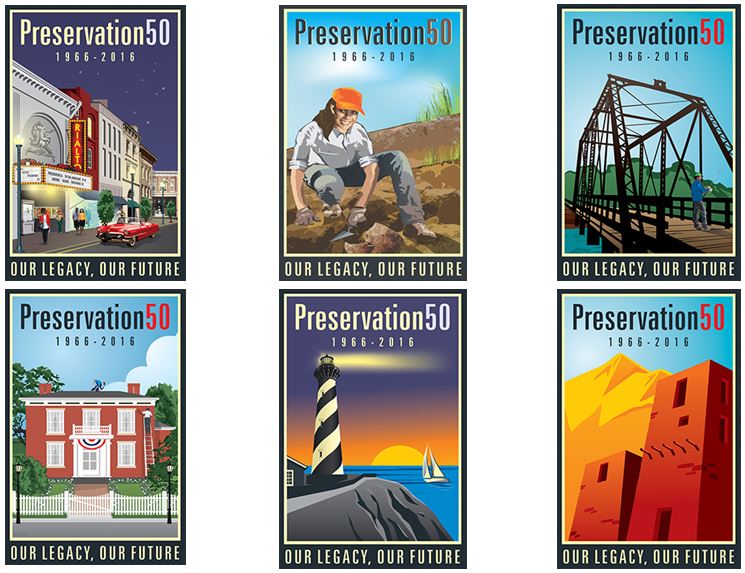May is National Historic Preservation Month and a great time to announce two new exciting preservation initiatives at the PA SHPO. We’re celebrating this year by kicking off our “Community Connections” campaign, the outreach and planning efforts for Pennsylvania’s next statewide historic preservation plan, and our Preservation50 Community Recognition campaign.
Why are we talking about ‘Community’ so much?
You might have noticed that both initiatives have the word ‘community’ in the title. The timing of the 50th anniversary of the National Historic Preservation Act (NHPA) this year coincides nicely with our kicking off the planning process for the next statewide historic preservation plan in 2018. Both initiatives provide an opportunity to deepen our understanding of community, the connection between community and historic preservation, and craft a plan to help us launch the next phase of the preservation movement in partnership with communities old and new, traditional and non-traditional.

Community members gather at the Herberlig-Parlmer Park in Carlisle, Pennsylvania for a clean up day coordinated by the West Side Neighbors Association. Photo courtesy of Pennsylvania Humanities Council.
When we talk about ‘communities,’ we mean people connected to a place (think neighborhood organizations, friends groups, municipalities, etc.) or individuals linked by common interests and goals (think Preservation educators, bloggers, etc.). Communities provide experiences (such as festivals, learning opportunities, tours, workshops); activism, advocacy, fundraising, and resource management; testimony that preservation matters; showcases for impactful projects; and important information for preservation leaders about what matters to them.
We can all rattle off the names of communities very familiar to Pennsylvania’s preservation world. But there is more going on out there, more people and groups that share our goals, are having positive impacts that haven’t received much attention, and aren’t working closely with the SHPO. We need to identify them, develop relationships, learn from them, and share their innovations or strategies with others. To do this, we need to expand our definition of community; connecting with them will help us deepen our resources, broaden our network, and improve prospects for future successes.

Connecting with Communities for the Next Statewide Plan
Community Connections
One way we all benefit from strong communities is by their participation with the statewide historic preservation plan. I hope you’re as excited as we are that it’s time once again to start thinking about the next statewide historic preservation plan. The current plan, Building Better Communities: The Preservation of Place in Pennsylvania, expires at the end of 2017. It may seem like it’s early to start talking about the next plan if it doesn’t need to be in place until 2018, but we take our role as the plan facilitators very seriously and want to make sure that every ‘community’ that wants to be involved, can be.
That’s right – I did say we are the plan facilitators. The statewide historic preservation plan isn’t the PA SHPO’s plan, it’s Pennsylvania’s plan. We see our role as a leader, convener, partner, collaborator, contributor, and champion. We want to connect with as many traditional and non-traditional communities – and everyone in between – as we can during this process to create a plan with clear, practical goals that serve as a general guide for decision-making and a resource for anyone working with older and historic places.
The foundation of any good planning effort is engagement, so we created “Community Connections: Planning for Preservation in Pennsylvania” as the engagement strategy for the statewide preservation planning process. Generally, this is a two-pronged strategy: 1) engaging the public through an online survey and, later this year, in regional forums and 2) collaborating with our many partners through a State Plan Task Force, focus groups, and regular updates.
∗ Click Here to Take the Survey ∗
Right now we need your help! Your input helps identify issues and create a vision for the future of older and historic places in our communities. Your feedback is a crucial part of the planning process. Please take a few minutes to complete a brief online survey by clinking on the link above. Share this post with your friends, neighbors, and colleagues and ask them to take the survey, too. We also used a public survey in 2011 to inform the current statewide plan and got over 2,700 responses, with at least one from every county. Our goal is to beat that number this year and have even more voices tell us what matters to them.
Tune in again later to learn more about the engagement part the planning process and the next steps in future posts.

Preservation50 logos from www.Preservation50.org
Preservation50 Community Recognition
Part of creating that strong community network is recognizing those communities that are models for what can be achieved through lots of hard work, dedication, and optimism.
As part of the Preservation50 commemoration this year, the PA SHPO will be recognizing notable achievements and innovative contributions to the historic preservation movement made by all sorts of communities. Some may be established and familiar, and some will be new or lesser-known ones that can inspire us to move into the next 50 years with fresh ideas and enthusiasm.
Our Preservation50 efforts and activities will take place between May and October. We’ll be recognizing communities and their achievements in our newsletter and as blog post “shout-outs,” nominating one (or more!) for a special Preservation PA award, featuring several during a national social media blitz, and incorporating them into our “Community Connections” statewide plan outreach efforts.
The 50th anniversary of the National Historic Preservation Act serves as a threshold. It’s certainly not a mile marker or a finish line. Instead, it’s an opportunity for us to reflect on past preservation successes so we can build on the efforts supporting them. And, more importantly, it’s an opportunity to consider what we’re missing out on, and what we can do differently. Only then can we move forward with a clear vision for implementing the SHPO’s aspirations, and support to help others succeed in theirs.
The actions of state and federal agencies working in conjunction with the SHPO have achieved some significant outcomes, but most true success stories include a substantial contribution from concerned citizens and municipal governments—or are often entirely the result of community effort. With or without state or federal involvement, the involvement of a caring and effective community is essential to ensure the future of any resource.
Comment Policy
PHMC welcomes and encourages topic-related comments on this blog. PHMC reserves the right to remove comments that in PHMC’s discretion do not follow participation guidelines.
Commenters and Comments shall be related to the blog post topic and respectful of others who use this site.
Commenters and Comments shall not: use language that is offensive, inflammatory or provocative (this includes, but is not limited to, using profanity, obscene, or vulgar comments); disparage other commenters or people; condone illegal activity; identify the location of known or suspected archeological sites; post personal information in comments such as addresses, phone numbers, e-mail addresses or other contact details, which may relate to you or other individuals; impersonate or falsely claim to represent a person or an organization; make any commercial endorsement or promotion of any product, service or publication.
If you would like to comment on other topics not related to this blog post but related to PHMC, please fill out the PHMC Contact Us Form.

Leave a Reply